You are using an out of date browser. It may not display this or other websites correctly.
You should upgrade or use an alternative browser.
You should upgrade or use an alternative browser.
Messerschmitt Me 329
- Thread starter Maveric
- Start date
- Joined
- 25 June 2009
- Messages
- 14,109
- Reaction score
- 4,244
Photos of the full-scale Me 329 mock-up and an original company plan (from Deutsche Zweimotorige Kampfflugzeuge im 2. Weltkrieg, Waffen Arsenal):
Attachments
- Joined
- 13 May 2006
- Messages
- 1,039
- Reaction score
- 901
- Joined
- 25 June 2009
- Messages
- 14,109
- Reaction score
- 4,244
PlanesPictures said:
We already got your pics here on the forum:
http://www.secretprojects.co.uk/forum/index.php/topic,1663.0
- Joined
- 11 June 2014
- Messages
- 1,456
- Reaction score
- 2,394
- Joined
- 8 March 2009
- Messages
- 1,014
- Reaction score
- 1,114
- Joined
- 11 June 2014
- Messages
- 1,456
- Reaction score
- 2,394
Jemiba said:Judging the position and shape of the wing root and that, of the canopy (though not
fully identical to most drawings), it could be the Me 265, I think.
I agree. I have photos of the other mockup from five different angles and it does appear to be the later P 10/Me 265. On the inside it's got two seats side by side, one set slightly further forward than the other, and the canopy hinges open to starboard. Wurster's Me 329 was directly competing against Stender's P 10/Me 265 so having their mockups side by side makes sense.
richard B
ACCESS: Secret
- Joined
- 17 August 2006
- Messages
- 335
- Reaction score
- 464
sienar said:But what is the mockup in the background on the right?
And the mockup on the left ?
I agree for the most part but the fuselage does not seem to be so rounded, the windows are flatter, the nose glazzing is deeper, the "Bola" gun mount is absent from the Me264, the rearward little square window is on a upper position while the Me 264 has it on a lower one. The mockup also seems to have a low wing, the Me264 had a high wing.
- Joined
- 11 March 2006
- Messages
- 8,667
- Reaction score
- 3,529
You may be right, but I'm not sure, if that girder represents the exact position of the wing,
or if the whole mockup was just built to represent the fuselage. And as it is a mockup, I
would not expect too much conformity with the real thing, as built in just two prototypes,
that may not have been either, what series aircraft would have been.
or if the whole mockup was just built to represent the fuselage. And as it is a mockup, I
would not expect too much conformity with the real thing, as built in just two prototypes,
that may not have been either, what series aircraft would have been.
- Joined
- 11 June 2014
- Messages
- 1,456
- Reaction score
- 2,394
Timing wise, photos of the Me 329 mock-up seem to first appear in a report in Feb 43. I would guess that it was constructed during autumn-winter 1942. By this time, three examples of the Me 261 had already been built so it seems unlikely that a mock-up of it would still be needed. The Me 264 V1 first flew in December 1942 (albeit as a 'flying mock-up' rather than a true prototype). I would guess it's a mock-up of the Me 264, which was still a work in progress at this point and for which a static mock-up might still have been useful. Such a mock-up might have catered for a range of potential alterations or alternative configurations.
If the mockup at the right is the Me 265, looking at those proportions the size of the left mockup isn`t likely to be as massive as the Me 264, not counting the afore mentioned differences. I would put it in the Bomber B category or at the "Arbeitsflugzeug" program, although, AFAIK, there were no Messerschmitt tender.
- Joined
- 11 June 2014
- Messages
- 1,456
- Reaction score
- 2,394
Wurger said:If the mockup at the right is the Me 265, looking at those proportions the size of the left mockup isn`t likely to be as massive as the Me 264, not counting the afore mentioned differences. I would put it in the Bomber B category or at the "Arbeitsflugzeug" program, although, AFAIK, there were no Messerschmitt tender.
It could actually be something we don't otherwise know about. The Me 265 and numerous other projects might have vanished without trace had it not been for Lippisch's 1976 book. Whatever it is, it doesn't appear to have been a product of Abteilung L, which would make it a product of Voigt's main project office - and much of their work is very little known.
Nimitz Zhang
ACCESS: Restricted
- Joined
- 15 July 2019
- Messages
- 16
- Reaction score
- 3
Guys, do you know why the Me 329 mockup has its landing gear on the far side of the engine while almost all drawings/models/fan art shows the landing gear on the inner side of the engine and folding forward?
Mockup


Drawing

The drawings made no sense to me as the landing gear took the space needed for the pair of wing root mounted Mk 103 cannons and prevents ordinance form being carried closed to the center of the aircraft.
Mockup
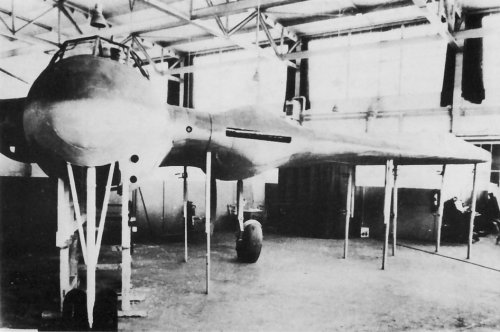
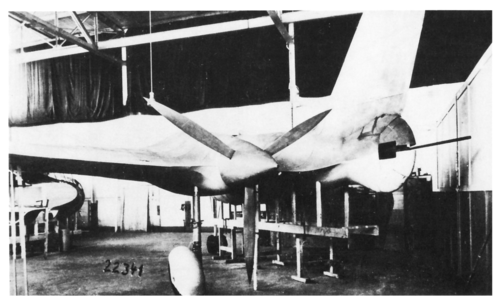
Drawing
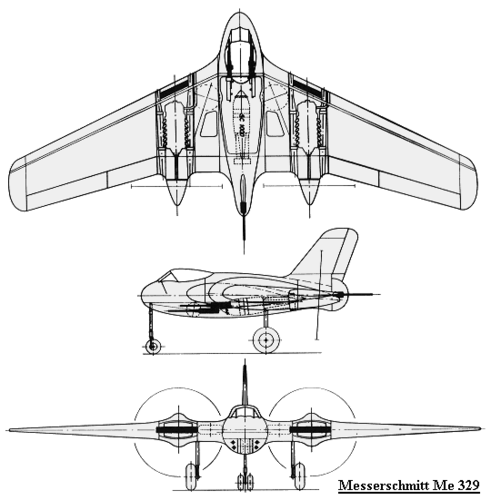
The drawings made no sense to me as the landing gear took the space needed for the pair of wing root mounted Mk 103 cannons and prevents ordinance form being carried closed to the center of the aircraft.
- Joined
- 13 May 2006
- Messages
- 1,039
- Reaction score
- 901
Guys, do you know why the Me 329 mockup has its landing gear on the far side of the engine while almost all drawings/models/fan art shows the landing gear on the inner side of the engine and folding forward?
Mockup
View attachment 617428
View attachment 617429
Drawing
View attachment 617430
The drawings made no sense to me as the landing gear took the space needed for the pair of wing root mounted Mk 103 cannons and prevents ordinance form being carried closed to the center of the aircraft.
It seems there were two versions. My old model was without Mk103 canon but I've never thought about it that way
Attachments
Nimitz Zhang
ACCESS: Restricted
- Joined
- 15 July 2019
- Messages
- 16
- Reaction score
- 3
Is there an actual document from which we can dig further into the Me 329? I am pretty new here and am quite overwhelmed by the sheer number of paper planes I encountered, not knowing which one is fake and which real.Guys, do you know why the Me 329 mockup has its landing gear on the far side of the engine while almost all drawings/models/fan art shows the landing gear on the inner side of the engine and folding forward?
Mockup
View attachment 617428
View attachment 617429
Drawing
View attachment 617430
The drawings made no sense to me as the landing gear took the space needed for the pair of wing root mounted Mk 103 cannons and prevents ordinance form being carried closed to the center of the aircraft.
It seems there were two versions. My old model was without Mk103 canon but I've never thought about it that way
szukający
ACCESS: Restricted
- Joined
- 18 August 2021
- Messages
- 16
- Reaction score
- 18
It seems to me that all modern drawings and works are wrong. 
According to the drawings (from "Luftwaffe Secret Wings of the Third Reich" by Dan Sharp, page 43) and photos of the mockup, the exhaust outlets should not be on top of the wing, but IN the wing.


GREEN - Air for the engine
BLUE - Cooling
RED - Exhaust system
ORANGE - Possible cooling course (this resembles the solution in ducted propellers)
I mark that it illustrative drawing
The exhaust system is also air-cooled.
Interesting layout, good for night planes (and let's not forget of the possible engine armor).
We really need a better quality drawings to research ...
...
Engine patents - "Messerschmitt AG"
1937-1939) DE677249 - Flugzeugtragflügel mit in den Flügel eingebautem Triebwerk
1937-1940) DE699412 - Tragflügel mit eingebauten Motoren / M shaped wings
1937-1940) DE700031 - Flugzeugtragflügel
Cooling patents
1937-1941) DE701749 - In einen Flugzeugtragflügel mit Landeklappen eingebauter Fluessigkeitskühler
1938-1941) DE706599 - Flugzeugtragflügel mit eingebautem Flüssigkeitskühler (See DE701749
1938-1942) DE722801 - Düsenkühler, insbesondere für Flugzeuge
1939-1942) DE729005 - Kühleinrichtung für flüssigkeitsgekühlte Brennkraftmaschinen / Only for research on this forum
1940-1942) DE721585 - Als Auftriebsklappe bzw. Sturzflugbremse zu verwendende Regelklappe hinter einem in den Tragflügel eines Flugzeuges eingebauten Kühler
And something similar - Zeppelin - 1937-1939) DE679023 - Anordnung einer Einrichtung zur Ballastwassergewinnung
According to the drawings (from "Luftwaffe Secret Wings of the Third Reich" by Dan Sharp, page 43) and photos of the mockup, the exhaust outlets should not be on top of the wing, but IN the wing.
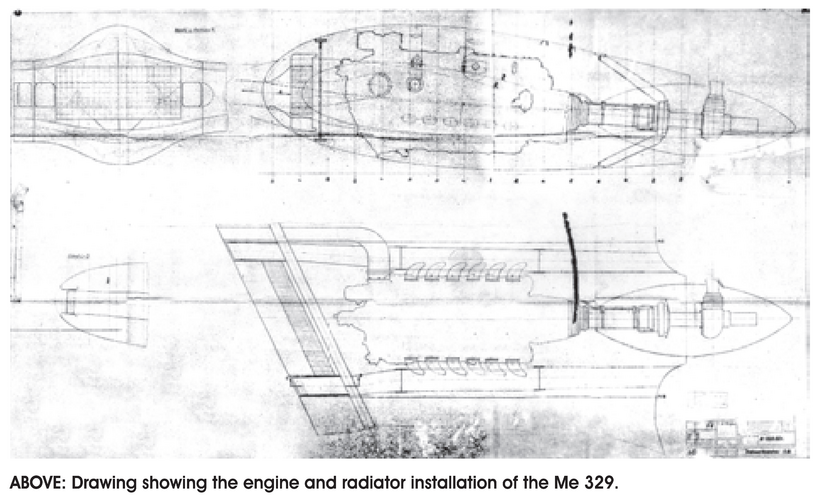
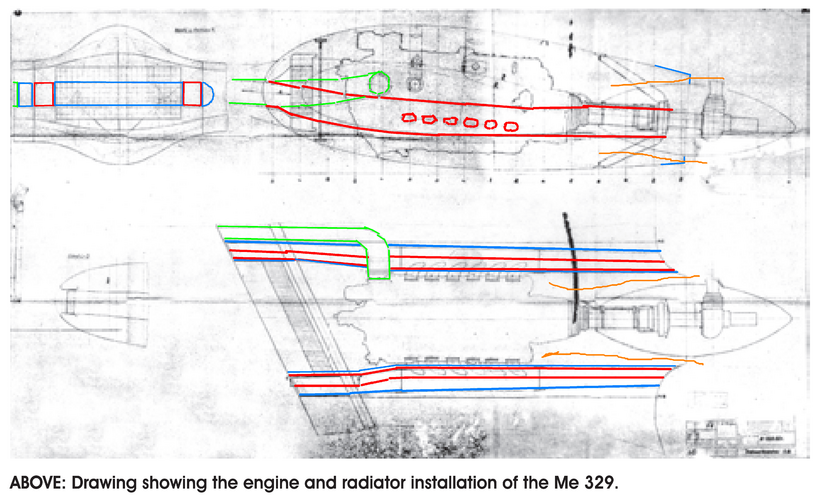
GREEN - Air for the engine
BLUE - Cooling
RED - Exhaust system
ORANGE - Possible cooling course (this resembles the solution in ducted propellers)
I mark that it illustrative drawing
The exhaust system is also air-cooled.
Interesting layout, good for night planes (and let's not forget of the possible engine armor).
We really need a better quality drawings to research
Engine patents - "Messerschmitt AG"
1937-1939) DE677249 - Flugzeugtragflügel mit in den Flügel eingebautem Triebwerk
1937-1940) DE699412 - Tragflügel mit eingebauten Motoren / M shaped wings
1937-1940) DE700031 - Flugzeugtragflügel
Cooling patents
1937-1941) DE701749 - In einen Flugzeugtragflügel mit Landeklappen eingebauter Fluessigkeitskühler
1938-1941) DE706599 - Flugzeugtragflügel mit eingebautem Flüssigkeitskühler (See DE701749
1938-1942) DE722801 - Düsenkühler, insbesondere für Flugzeuge
1939-1942) DE729005 - Kühleinrichtung für flüssigkeitsgekühlte Brennkraftmaschinen / Only for research on this forum
1940-1942) DE721585 - Als Auftriebsklappe bzw. Sturzflugbremse zu verwendende Regelklappe hinter einem in den Tragflügel eines Flugzeuges eingebauten Kühler
And something similar - Zeppelin - 1937-1939) DE679023 - Anordnung einer Einrichtung zur Ballastwassergewinnung
Last edited:
I would like to know if this exhaust system could produce more trust than the conventional open systems by increasing the accelerated mass or if the increased friction more than compensated this (I know, this was not the primary intention).
The indirect hydrogen cooling system described in DE729005 is quite interesting but a bit far-fetched. It will combine the drawbacks of airplanes with Zeppelins. Is there any more evidence, that this war really considered for this plane?
A similar direct cooling system for originally air- cooled engines would be even more interesting!
Edit:
this posting:
shows a source which indicates, that this exhaust system was likely not inferior to the conventional systems.
The indirect hydrogen cooling system described in DE729005 is quite interesting but a bit far-fetched. It will combine the drawbacks of airplanes with Zeppelins. Is there any more evidence, that this war really considered for this plane?
A similar direct cooling system for originally air- cooled engines would be even more interesting!
Edit:
this posting:
shows a source which indicates, that this exhaust system was likely not inferior to the conventional systems.
Last edited:
- Joined
- 26 May 2006
- Messages
- 33,488
- Reaction score
- 13,541
Oui t il des informations sur le type de motorisation devait recevoir le proget
Welcome aboard Olery,
please speak by English Language.
It powered by two Daimler-Benz DB 603 or Jumo 213 piston engines.
szukający
ACCESS: Restricted
- Joined
- 18 August 2021
- Messages
- 16
- Reaction score
- 18
Patent DE679023 , is here only for demonstration.I would like to know if this exhaust system could produce more trust than the conventional open systems by increasing the accelerated mass or if the increased friction more than compensated this (I know, this was not the primary intention).
The indirect hydrogen cooling system described in DE729005 is quite interesting but a bit far-fetched. It will combine the drawbacks of airplanes with Zeppelins. Is there any more evidence, that this war really considered for this plane?
A similar direct cooling system for originally air- cooled engines would be even more interesting!
It's a patent for the engines of airship LZ 130 Graf Zeppelin II
Here is the second patent - Zeppelin 1939-1942) DE717305 - Einrichtung zur Rußbeseitigung bei Anlagen zur Ballastwassergewinnung aus den Motorauspuffgasen bei Luftschiffen
And here are pictures of the engine nacelle (and inside)
The Zeppelin Reborn: LZ-130 - ZRS THE MOVIE
Whatever else the Nazi-government dominated operation might be accused of, they were not stupid. Beyersdorff pointed out it did not matter what gas was inside. The LZ-129 fabric would burn from the outside, regardless if the cells were filled with nitrogen. He wrote: “...that an incombustible...
zrsthemovie.com
http://zrsthemovie.com/?page_id=1491 / 1 photo during scrapping
Zeppelin LZ 131 should have such engines, not like the LZ 129, which is a common mistake.
LZ 130 is generally forgotten. I'm sorry for how this sounds but - Everyone talks and writes about the LZ 129 just because it burned up in front of the cameras at Lakehurst. Other airship and their disasters are not so publicized (e.g. passenger airships before the First World War, English R 100 and R 101, Goodyear Wingfoot Air Express blimp 1919, Italian airship M.1 with a double decker gondola, and so on).
Even depictions of later Zeppelin airships are based on the LZ 129 model. / Even in fiction e.g. movie Rocketeer (1991) LZ-130 Luxemburg ; movie Sky Captain and the World of Tomorrow (2004) [a really nice movie; it's a pity of creators] Hindenburg III ; comics Biggles Le Dernier Zeppelin - Nr 6 (1990) LZ 131 in camuflage [interesting idea but story needs improvement].
If you want more (true) informations about the Me 329, you have to ask Mr. newsdeskdan (is a writer and historian).
Unless somebody knows someone in Germany with access to various archives (plus the issue of fees...).
And other countries, e.g. as - Captured German Aeronautical Documents (CGD) Microfilm , in USA
Last edited:
Thanks for the interesting link (despite the theory of the burning skin of the Hindenburg is false), but we shouldnt go totally off topic. The cooling method described in DE729005 would be very feasible for airships (especially if you want to regulate the buoyancy with varying the density of the lifting gas (by adding cooling heat if required), but this patent has no relation to airships. For the readers who cant read the text, it is about a cooling system were the engine has a conventional primary liquid cooling system which is transferring the cooling heat to light gas with high heat capacity (hydrogen or helium). This gas circulating through the wing to create a surface cooling. For regulating the pressure inside the wing, hydrogen can be added or released, doesn’t sound like a very feasible solution for a fighter plane to me… That’s why I’m asking, is there any relation between the Me329 and DE729005?
szukający
ACCESS: Restricted
- Joined
- 18 August 2021
- Messages
- 16
- Reaction score
- 18
Ups... my mistake. Forgive me, I got the patent numbers mixed up.Thanks for the interesting link (despite the theory of the burning skin of the Hindenburg is false), but we shouldnt go totally off topic. The cooling method described in DE729005 would be very feasible for airships (especially if you want to regulate the buoyancy with varying the density of the lifting gas (by adding cooling heat if required), but this patent has no relation to airships. For the readers who cant read the text, it is about a cooling system were the engine has a conventional primary liquid cooling system which is transferring the cooling heat to light gas with high heat capacity (hydrogen or helium). This gas circulating through the wing to create a surface cooling. For regulating the pressure inside the wing, hydrogen can be added or released, doesn’t sound like a very feasible solution for a fighter plane to me… That’s why I’m asking, is there any relation between the Me329 and DE729005?
Thanks for drawing my attention on this mistake. I'm already correcting.
Yes it is when you write late at night...
Honestly ? I do not know.
I gave more examples of Messerschmitt's research on radiators in the wings, but what the DE729005 patent is for, I really don't know.
Is lacking original research materials.
See how many years was repeated a wrong version of the Me 329.
Last edited:
















